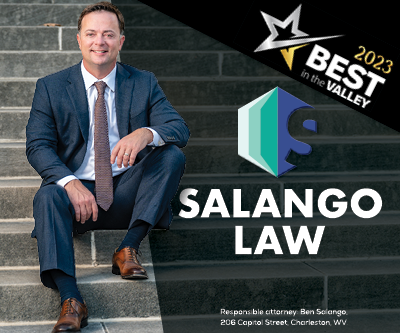WHEELING - A railroad giant is again trying to bring to light what it feels is fraud on the part of asbestos lawyers who have filed thousands of claims in West Virginia.
CSX Corp. wants its Second Amended Complaint officially filed in federal court in its case against Pittsburgh law firm Peirce, Raimond & Coulter, filing for leave to amend May 2.
It's all part of the saga of Bridgeport doctor Ray Harron, accused of diagnosing lung disease in patients who did not have it. CSX says the Peirce firm then hid those plaintiffs with thousands of others, preventing it from being able to adequately investigate each complaint.
"CSXT's proposed Second Amended Complaint is based on the same fraudulent scheme described in the Amended Complaint and reasserts claims based on the same legal theories," wrote Huntington attorney Marc Williams, of Huddleston Bolen.
"Specifically, the proposed Second Amended Complaint alleges that Harron and the lawyer defendants fabricated and prosecuted objectively baseless asbestos claims against CSXT and seeks damages for injuries caused by 11 such claims."
One of those claims is a case of not-so-mistaken identity. In 2000, CSX employee Ricky May learned that the Peirce firm was to conduct an asbestos screening in Huntington on June 13, 2000. At a previous mass screening, May had tested negative for asbestosis.
CSX says former employee Robert Gilkison, who the suit says was hired by the Peirce firm as a "runner" to round up former colleagues for lawsuits, suggested May get someone who previously tested positive to pretend to be him at the upcoming exam.
"Defendant Gilkison suggested to Mr. May that he should get someone who had previously tested positive for asbestosis to set for his exam and thus be eligible to file a claim against CSXT," the lawsuit reads.
May, the suit claims, then got Danny Jayne, a CSX worker who had been diagnosed with asbestosis in 1999, to impersonate him for the X-ray. The suit says Gilkison helped make this happen by letting May complete the paperwork and walking Jayne through the exam.
The X-rays were sent to Harron July 23, 2000. The Bridgeport doctor said the lung images showed signs of asbestosis.
Jayne had received a $7,000 settlement from CSX, while May got $8,000.
CSX then did some investigating and had a doctor verify that the May and Jayne X-rays were of the same man. CSX filed suit last year against both of them, and they confessed to taking part in the scheme. May agreed to pay back his settlement; Jayne agreed to offer testimony. Gilkison has denied any wrongdoing.
The complaint alleges common law fraud and a violation of federal racketeering laws. In filing the Second Amended Complaint, the company reiterates that it would allow separate trials for Gilkison and the Peirce firm.
It's not Harron's first publicized trouble.
In 2005, federal court judge Janis Graham Jack made national headlines when she uncovered duplicate and fraudulent silica diagnoses in her Texas courtroom. Many of those diagnoses were made by Harron and were made on plaintiffs who had already brought asbestos claims.
In Jack's opinion dismissing the claims, she said "These diagnoses were driven by neither health nor justice - they were manufactured for money."
Following Harron's admission that he did not even make the diagnoses of the patients whose x-rays he read, Jack noted that most of "these diagnoses are more the creation of lawyers than doctors.
"Both the scientific community and the federal judge must have been stunned when Dr. Harron improbably diagnosed the same people as being sick from both conditions."
Harron used his Fifth Amendment right to not incriminate himself before Congress and turned over his Texas medical license.
CSX wants new complaint against Pittsburgh firm entered
ORGANIZATIONS IN THIS STORY

